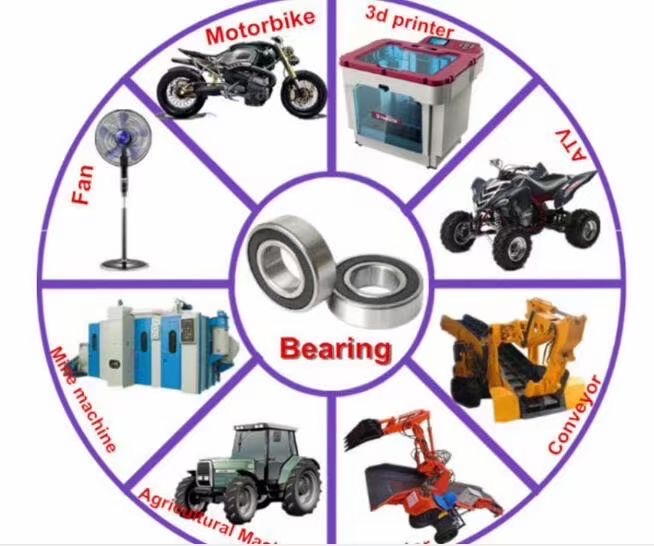Bearing selection is no longer difficult! A 12-step practical guide that engineers can easily master.
From: XingMao DATE: 2025/11/12 Hits: 4
Bearing selection is no longer difficult! A 12-step practical guide that engineers can easily master.
Choosing the right bearing is the first step to stable equipment operation. However, faced with a dazzling array of types and complex parameters, many engineers often don't know where to start. Don't worry! We've simplified the "12-step bearing selection process" from professional manuals into a practical checklist, along with key decision-making techniqu...
Choosing the right bearing is the first step to stable equipment operation. However, faced with a dazzling array of types and complex parameters, many engineers often don't know where to start. Don't worry! We've simplified the "12-step bearing selection process" from professional manuals into a practical checklist, along with key decision-making techniques and lifespan estimation methods, to help you clarify your thinking in 3 minutes and efficiently complete the selection.

I. 12-Step Quick Checklist for Bearing Selection (Simplified Version)
1. Clarify Operating Requirements: First, determine the equipment's speed, load magnitude, direction (radial/axial), and operating environment (temperature, dust, corrosion, etc.).
2. Preliminary Bearing Type Selection: High-speed, light-load? Choose ball bearings; heavy-load, low-speed? roller bearings are more suitable.
3. Determine Installation Space Limitations: Based on the shaft diameter and housing dimensions, narrow down the range of available bearing models.
4. Calculate Equivalent Load: Calculate the equivalent load value based on the actual stress conditions.
5. Estimate Required Lifespan: Refer to recommended values—for example, for equipment operating continuously for 24 hours, a recommended lifespan is 40,000 to 50,000 hours.
6. Verify Basic Rated Lifespan: Use the formula L₁₀ = (C/P)³ × 10⁶ revolutions (ball bearings) or (C/P)¹⁰/₃ (roller bearings) to verify if it meets the standard.
7. Select the appropriate precision class: P0 is sufficient for general machinery; high-precision equipment (such as machine tools) requires P5 or higher.
8. Determine the clearance type: For high temperatures or interference fits, select a large clearance; for precision positioning, a small clearance or even negative clearance is required.
9. Consider the cage material: For high-speed applications, engineering plastic or lightweight metal cages are preferred.
10. Check lubrication method compatibility: Grease lubrication or oil lubrication? Ensure the bearing structure supports the selected method.
11. Assess sealing and dustproof requirements: For harsh environments, bearings with sealing rings are recommended (such as ZZ or 2RS types).
12. Final verification and alternative solutions: Confirm ease of installation and maintenance, and prepare 1-2 alternative models in case of stock shortages.
II. Key Decision Points Explained in Plain Language
1. Ball Bearings vs. Roller Bearings: Ball bearings have low friction and high speed, suitable for light to medium loads; roller bearings have a large contact area, can withstand heavy loads and impacts, but have a lower limiting speed.
2. How to estimate lifespan? Don't just look at theoretical values! Actual lifespan is greatly affected by lubrication, contamination, and installation errors. For a conservative approach, it's safer to use 70% of the recommended value.
3. Smaller clearance isn't always better: Too small a clearance can cause overheating and seizing, while too large a clearance leads to vibration and noise. Always consider temperature rise and fit tolerances when making a comprehensive judgment.
III. Practical Tips
1. For continuously operating equipment (such as fans and pumps), prioritize models with a lifespan ≥ 40,000 hours.
2. Students or beginners can use a "performance comparison table" to quickly eliminate unsuitable types (for example, Self-aligning Roller Bearings are suitable for shaft misalignment, while Angular Contact Ball Bearings excel at handling axial forces).
3. Remember: Selection isn't about finding the "best," but the "most suitable"—cost, supply, and maintenance must all be considered.
This guide translates complex standards into actionable steps, maintaining technical rigor while lowering the barrier to understanding. Whether you're a design novice or an experienced field worker, you can quickly get started and avoid common selection pitfalls.


